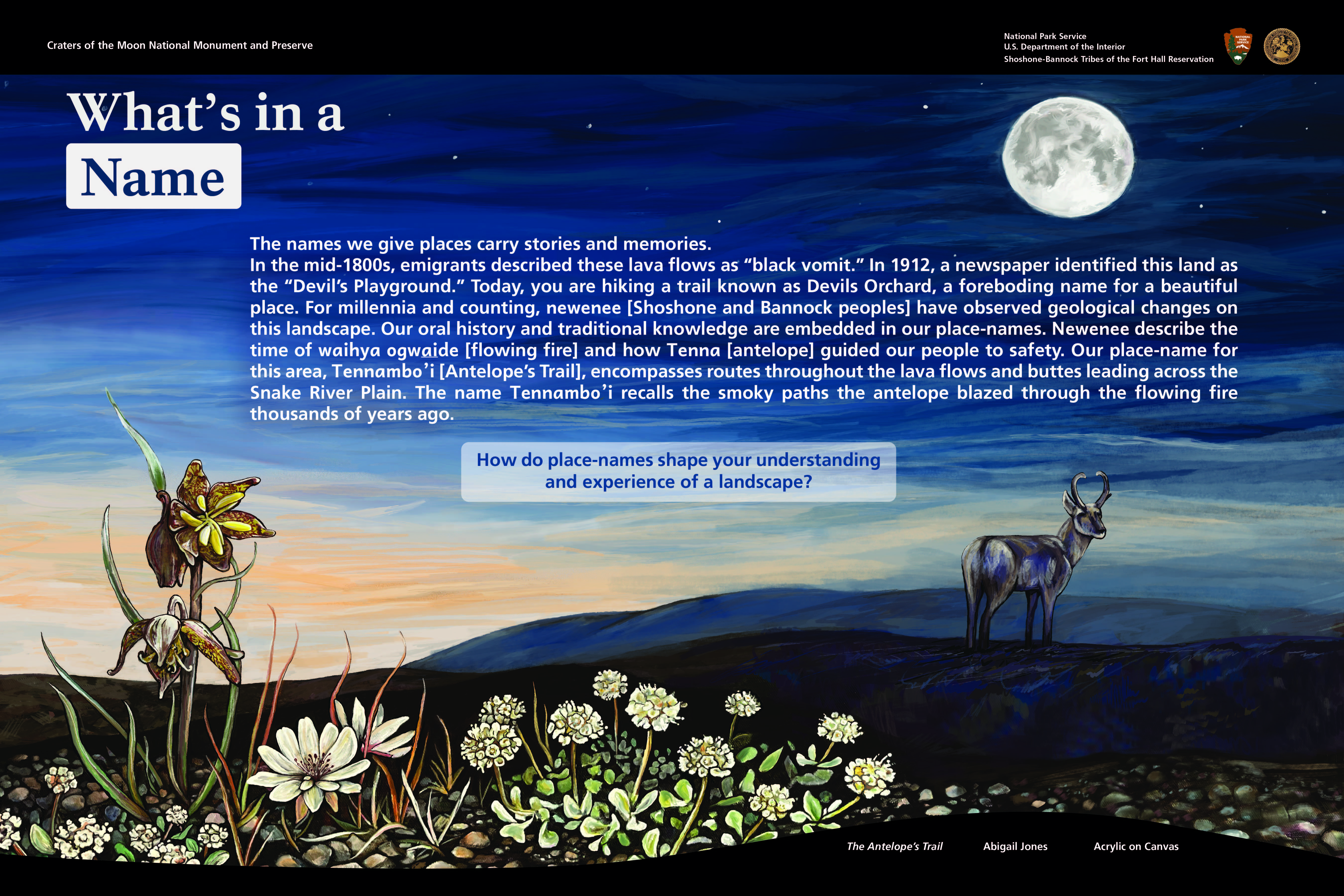News Release

Abigail Jones
|
Subscribe
|
Contact: Jennifer Jones, 208-340-7188
ARCO, Idaho – Visitors to Craters of the Moon National Monument & Preserve in southern Idaho now have an opportunity to learn about the Shoshone-Bannock Tribes’ long history with, and continued connection to, the landscape through a series of new interpretive wayside trail signs.
The National Park Service (NPS) and the Shoshone-Bannock Tribes worked together to develop a series of nine new interpretive waysides on the .5-mile-long Devils Orchard Nature Trail. The new waysides feature aspects of Indigenous history, perspective, culture, and language while challenging visitors to consider the difficulties of protecting this fragile environment.
“We’re happy to have this opportunity to welcome the public here and to educate them, as well as our Tribal membership, about who we are and where they are,” said Nolan Brown, with the Shoshone-Bannock Tribes Language and Cultural Preservation Department. “We want to share our long history and deep connection to our homelands and how we have adapted very well to live and flourish in them.”
Craters of the Moon is located within the ancestral homelands of the Shoshone and Bannock peoples, who traveled through the area for thousands of years on their way to and from salmon fishing and buffalo hunting areas as well as camas and wild carrot digging grounds. The new waysides include stories from the Shoshone-Bannock Tribes’ oral tradition and history, such as “Tokoa” about the volcanic eruptions that created the lava landscape. They also present the Shoshone-Bannock Tribes’ traditional place names for the area, such as “Tennambo’i” the Antelope’s Trail, which recalls how the Antelope guided them to safety through the lava flows.
“We greatly appreciate the opportunity to partner with the Shoshone-Bannock Tribes to share their story in a way that hasn’t been done here before,” said Wade Vagias, Superintendent of Craters of the Moon National Monument & Preserve. “The Shoshone-Bannock Tribes’ history with this landscape is much longer than ours and their knowledge of it is much deeper and it’s very important that their voice is present here.”
The new interpretive waysides were dedicated recently during a special event at Craters of the Moon. The presentation included a ceremony with a prayer by Shoshone-Bannock Tribal elder Doyle Punkin; remarks by NPS and Shoshone-Bannock Tribal leaders and staff; recitation of the Shoshone oral history, “Tokoa,” by Rose Anne Abrahamson, Agai Deka’a [Lemhi]; and a song about the Antelope by Shoshone-Bannock Tribal member Susan Avilla-Dixey.
The NPS is celebrating the Centennial of Craters of the Moon this year in collaboration with partners, stakeholders, and the public. President Calvin Coolidge established Craters of the Moon National Monument on May 2, 1924, by issuing a proclamation to protect its “weird and scenic landscape peculiar to itself.” For more information, visit https://go.nps.gov/crmo100
Last updated: October 21, 2024
